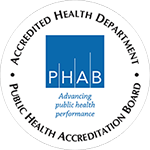In Ohio, the leading cause of death among those age 1 to 44 is injury and/or violence. Injury and violence related deaths outpace all other causes combined, including heart disease, stroke, and cancer. As such, Violence and Injury Prevention seeks to prevent and/or mitigate the potential causes and circumstances that can create injury and death.
Reviewing both state and local data highlights that the greatest risk for injury and death arises from substance use disorder, overdose, and subsequent substance use related health issues. Locally, this data has been analyzed and used to help create targeted strategies and programming specific to our population needs.
The Portsmouth City Health Department and Office of Injury Prevention is committed to strengthening and sustaining effective injury prevention and control measures that reflect the significance of the issues that are present in the community. The influx of illicit Fentanyl and Fentanyl analogues into communities have had devastating impacts and caused a staggering loss of life. Recognizing these increased risks, the Portsmouth City Health Department and Office of Injury Prevention has endeavored to increase education, outreach, and harm reduction strategies all aimed at reducing the rate of both fatal and non-fatal overdose.
- From 1999 to 2012, the number of deaths in Ohio due to unintentional drug overdose increased 485 percent, and the increase has been driven largely by prescription drug overdoses.
- In Ohio, since 2007, there have been more deaths from drug overdose than from motor vehicle traffic crashes.
- There were 327 fatal drug overdoses in 1999 and the number grew to 1,914 deaths in 2012.
- Females represent the fastest growing group at risk for fatal prescription drug overdose.
Understanding that this is larger than the efforts of one agency, the Portsmouth City Health Department’s Office of Injury Prevention has sought out community, state, and federal partners to collaborate to ensure that comprehensive and innovative solutions are being implemented.
Currently, the Portsmouth City Health Department and Office of Injury Prevention can count among its many collaborative partners the Ohio Department of Health, Scioto County Collaborative Opioid Consortium, Ohio State University, Case Western Reserve University, Shawnee State University, Appalachian Regional Commission, the ADAMHS Board of Adams, Lawrence, and Scioto Counties, the Scioto County Health Coalition, Faith in Public Life, many faith leaders and churches, multiple criminal justice and law enforcement agencies and representatives, treatment facilities, local businesses, and private citizens. It is through this collective response that the greatest impact is provided.
The Office of Injury Prevention at the Portsmouth City Health Department is funded by the Ohio Department of Health, Violence and Injury Prevention Section through the Injury Prevention: Drug Overdose Prevention grant.
As a part of this grant, the Office of Injury Prevention has also been able to join the Ohio Injury Prevention Partnership (OIPP) and the Ohio Overdose Prevention Network (OOPN) and the state Harm Reduction Subcommittee. This grant and the connections made through these affiliations have been instrumental in reducing the burden of risk throughout the community and the related injury and violence associated with that burden.
The Portsmouth City Health Department is committed to strengthening and sustaining effective injury prevention and control measures that reflect the significance of the problem. We strive to reduce prescription drug overdose rates through campaigns and programs such as Project DAWN: Deaths Avoided With Naloxone, Prescription for Prevention: Stop the Epidemic, and Prescription for Recovery.
Project DAWN – Deaths Avoided with Naloxone is a community-based Overdose Education and Naloxone Distribution Program the seeks to increase the utilization and access to the life-saving overdose reversal drug Naloxone in the community setting, Project DAWN of Scioto County has presented at numerous state conferences and assisted the Project DAWN Programs that have since expanded across Ohio with programmatic set-up and program logistics. We offer Naloxone kits and education to community members and agencies.
Prescription for Prevention – Stop the Epidemic is a campaign developed by the Ohio Department of Health and implemented by Portsmouth City Health Department to raise awareness of the epidemic of prescription drug abuse and overdose. The focus of the program is to educate the community on what you can do to make your community a safe place, for example, how to safely dispose of medication.
Prescription for Community Recovery was funded by the Ohio Department of Health from 2010-2018, this Project worked to reduce the burden of Unintentional Overdose in Scioto County using a population-based approach that uses a combination of policy, systems change, education, and environmental responses designed to reduce factors which contribute to the incidence of overdose. This Project collaborated with numerous prescribers and pharmacies to increase access to Naloxone to patients at risk of overdose and to reduce the overprescribing of prescription opioids through medical education and promotion of “Ohio’s Opioid and Other Controlled Substance Prescribing Guidelines.”
We work in collaboration with the Ohio Department of Health, Scioto County Drug Action Team Alliance, Appalachian Regional ADAMHS (Alcohol, Drug, and Mental Health Services) Boards, local law enforcement, treatment facilities, and many local businesses that choose to be a part of the solution to the prescription drug problem. Through these collaborations and programs, we hope to reduce injury rates and make our community a safer place.
Please contact Abby Spears, Injury Prevention Coordinator for more information at (740) 354-8910.

